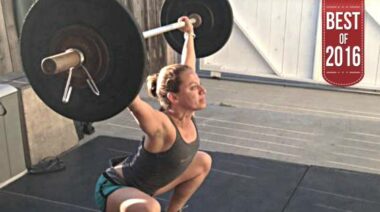In 1978, a book titled The Sports Medicine Book written by Marshall Hoffman and Gabe Mirkin was published, which had a big impact on the sports medicine community. In that book, the term RICE was coined, and the now common procedure of RICE was detailed.
However, in a recent blog post, one of the authors now claims the method is flawed. Doctor Mirkin termed the RICE acronym to remind people of the steps they need to take to heal injury. The letters stand for rest, ice, compression, and elevation. Besides rest, which many athletes only choose to employ if they must, ice is perhaps the most pervasive of each of these methods for treating injury. In his blog post, Mirkin focused on the flawed use of cryotherapy to treat injury.
Mirkin levies many charges against the practice of using ice to treat injuries and has the research to back them up. It seems the only saving grace for ice is its use as a pain reliever, a function that can be performed locally, unlike an oral drug. However, aside from this application, the case against ice seems strong. The majority of Mirkin’s blog post is centered around the process of inflammation as the body’s natural healing process. Mirkin argues that although ice alleviates pain, it also interferes with inflammation and thus slows healing.
Even if ice can be used in the short term to treat pain, Mirkin still warns against it, demonstrating through research that ice also weakens athletes. When ice is used during a game to treat pain, the area may need to be re-warmed to prevent weakness. However, it isn’t clear in Mirkin’s post (or perhaps the research) if this rewarming eliminates the pain relief.
Because of the role of inflammation in healing, Mirkin says that ice isn’t the only thing that can slow down injury recovery. Any anti-inflammatory substance or behavior might curtail this process, including various drugs like NSAIDs and immune suppressants.
Mirkin also warns that complete rest is often ineffective. Therefore, it seems that compression and elevation are the only two methods of injury care he now recommends, along with immediate, complete rest where necessary. Although Mirkin doesn’t specifically state why, it seems that elevation and compression may deal specifically with swelling without necessarily blunting inflammation.
So all of those bags of ice you see wrapped around athletes’ joints and muscles may be unwarranted, but there is still action we can take. For the big stuff like major injuries, severe pain, open wounds, and the like, consult a professional. For the more common minor injuries, Mirkin makes the following recommendations:
- Elevation: This process is the act of raising a body part above the heart to allow for the clearance of blood. Elevation can begin immediately while an injury is assessed. Elevation can also continue after the assessment to keep swelling in check, and is generally reserved for the limbs or the head.
- Bandages: For muscle and other soft tissue injuries, compression bandages work as well. The bandages will help control swelling and can be used even on the torso. Although it isn’t mentioned in the article, I suspect that other mechanical pressures like massage would be effective as well.
- Limited Use of Ice: Ice can still be used to treat pain for ten-minute sessions, but only right after the injury, if at all. Complete rest for minor injuries should continue for only about 24 hours.
Long story short, it looks like the acronym is no longer as catchy.
References:
1. Gabe Mirkin, “Why Ice Delays Recovery,” DrMirkin.com, 2014.
Photo courtesy of Shutterstock.






